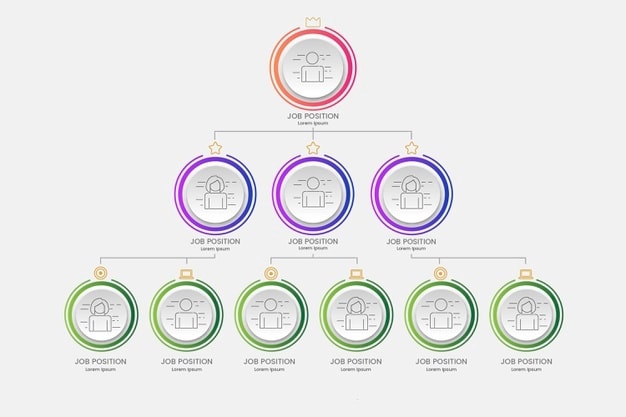
What Are Organizational Patterns? Types, Differences, and How to Use Them

Discover the importance of organizational patterns that help structure and organize your ideas Explore various types including chronological, spatial, sequential, topical, problem-solution, compare-contrast, cause-effect, advantages & disadvantage, and order of importance
Organization Pattern Definition and solution
Effective communication requires a logical and well-structured organizational pattern, which is crucial for the sender and receiver to comprehend and retain the information presented. This process helps to arrange and articulate ideas and thoughts in a manner that maximizes impact and clarity during speeches and presentations.
Clear organization is essential for fulfilling the stated purpose and ensuring that the information is understood and remembered by the receiver. By providing focus and direction, the organizational pattern aids in making sense of the information being shared.
Meaning
The structure of a speech is crucial for ensuring clarity and coherence. By carefully selecting and developing main points that are relevant to the topic and have appropriate weighting, the organizational pattern ensures that the desired response from the audience is achieved. This process also promotes clarity, preventing confusion or chaos from detracting from the overall message.
Types of organizational pattern
When it comes to meeting one's needs and organizing ideas, there are numerous organizational patterns available. The choice of pattern(s) to use will depend on the specific topic being written about and the intended purpose of the writing.
There are no hard and fast rules when it comes to selecting the most appropriate organizational pattern. It is important to carefully consider all of the available options and choose the one(s) that will make the most sense and facilitate proper understanding by the intended audience. Some common organizational patterns include:
1. Chronologicals or time-sequence pattern
Organizing information in a chronological sequence can prove to be beneficial when presenting a timeline of events or the development of a product or technology. This pattern can be used to provide a detailed account of the various phases involved in the creation process, whether it is in a backward or forward motion.
The chronological organizational pattern is particularly effective when presenting historical topics, allowing the presenter to illustrate the significance of events through various time periods. Each section is dedicated to a specific period, with sub-points or sub-headings detailing the events within that time frame. This pattern divides information into three distinct segments, such as before-during-after or past-present-future, making the purpose of the information clear. Non-fiction narratives or passages often include dates, while fiction passages are organized chronologically without specific years mentioned.
2. Spatials or geographical
The spatial organizational pattern arranges information based on physical location or area, making it ideal for creating a mental picture that distinguishes various parts through their relative position. This approach is particularly useful when the speaker or writer wants to convey how one item exists in relation to another.
Spatial patterns are commonly used by speakers and writers to share information about geography. Also known as descriptive writing, this organizational pattern is frequently used to describe the physical appearance of a particular thing. This technique is utilized in both non-fiction and fiction narratives, where the narrator provides a detailed description of a character or setting.
3. Sequential
The sequential organizational pattern is an effective way to present information in a step-by-step sequence that describes a specific process. Each section of the pattern represents a primary step that must be followed in order to accurately depict the order of events that occurred in the process. This type of organizational pattern is particularly helpful in ensuring that the information is presented in a logical and easy-to-follow manner.
Process writing is a popular approach used to provide clear directions or explain complex processes in society and nature. While it may be confused with chronological organizational patterns due to similarities, the main difference is that narratives occur at specific settings and timings in the latter case, whereas sequences can occur at any time in the former.
The topical organizational pattern is a commonly used approach that proves beneficial when other patterns fail to work. It involves arranging the information under sub-topics within a broader topic. This ensures that each type of information is given its own dedicated section.
5. Problem-solution
When it comes to presenting information in a clear and organized manner, the problem-solving organizational pattern can be a valuable tool. By dividing content into two main sections - one detailing the problem and the other offering a solution - this pattern can effectively persuade readers or listeners to support a specific course of action. This makes it an ideal choice for persuasive writing.
The aim is to persuade individuals to alter their behavior, views, or work methods by highlighting the existence of a problem and providing a viable solution. The problem section entails outlining the different facets of the issue, accompanied by evidence, while the solution section identifies potential remedies. Additionally, it strengthens the credibility of the solution by demonstrating its effectiveness compared to other options.
6. Compare-contrast
The compare-contrast organizational pattern is a valuable tool for organizing information based on similarities and differences between two or more subjects. This method is particularly effective when comparing and describing one subject in relation to another. By utilizing this pattern, one can gain a deeper understanding of a topic by exploring its similarities and differences with another subject that is already familiar.
When using the compare-contrast organizational pattern, it is essential to cover both similarities and differences in order to effectively convey your message. Fortunately, this can be accomplished by alternating between the two topics to emphasize your main points.
7. Cause-effect
Utilizing the cause-effect organizational pattern can effectively display information in a way that allows for the identification of different causes and effects of various conditions. This pattern is particularly helpful in persuasive or expository documents aimed at promoting an action plan to resolve an issue.
Using this pattern, it is possible to clearly illustrate the relationship between two variables that exhibit significant variations. The outline can be divided into two sections - one focusing on causes and the other on effects. Alternatively, the draft can be organized based on different purposes, with each cause listed under the more significant causes section and its impact described. When narratives are structured as cause-effect, they can effectively convey the reasons behind an event and its resulting effects. This pattern allows writers to explain both the cause and effect of a situation, providing a clear understanding of the relationship between the variables.
8. Advantages & disadvantage
The advantage-disadvantage organizational pattern is an effective way to present information by categorizing it into positive and negative aspects. It is particularly useful when the goal is to present both sides of an issue without taking a definitive stance.
There are several variations related to this pattern, and it is up to an individual which one he thinks will suit his needs best
9. Order of importance
The hierarchical organizational pattern proves to be an effective method of organizing information based on its value. With this approach, ideas or steps are ranked in order of priority, allowing the information to be presented in a way that highlights the most significant aspects first, and the least significant ones later. It's worth noting that both options and structures can be utilized in the order of importance organizational structure.







